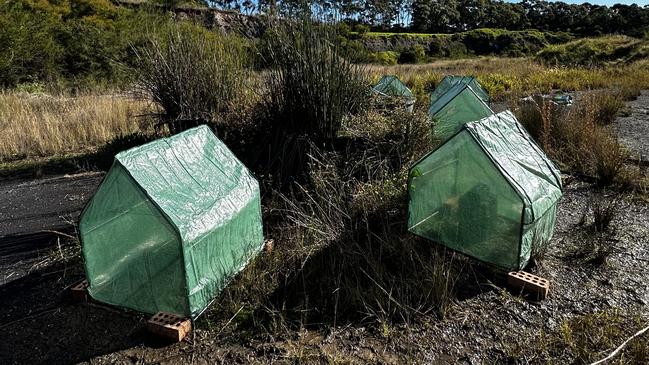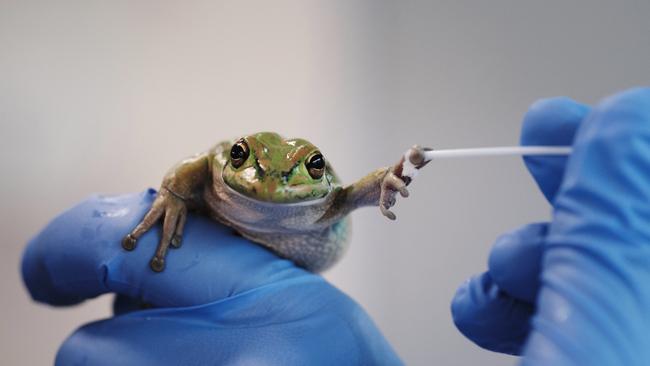Frogs sitting pretty against killer fungus after UTAS breakthrough on shelter heat treatment
Frogs facing extinction from a global fungal infection are being saved by greenhouse-like shelters developed by an international research team including the University of Tasmania.

Frogs facing extinction from a global fungal infection are being saved by greenhouse-like shelters developed by an international research team including the University of Tasmania.
Research recently published in the journal Nature found that Chytridiomycosis – a disease that has already destroyed at least six amphibian species in Australia – can be stopped in its tracks if frogs raise their body temperature above 30 degrees.

UTAS PhD candidate, Yorick Lambreghts, said the heat shelters, which can be made cheaply from everyday materials such as bricks or PVC, were a game-changer in the fight to protect frogs.
“This fungus is spread all over the world, affecting more than 500 amphibian species, so it’s a massive and widespread problem,” Mr Lambreghts said.
“The simplicity and high accessibility of this new hotspot shelter treatment provides exciting opportunities for the wider public to get involved in important global issues such as the conservation of some of our most vulnerable amphibians.
“And the reason that this treatment is so special is because it can be done basically in the field, and at an incredibly low cost.
“Once the small heat greenhouses are set up, the frogs just choose to enter because they like higher temperatures.
“And it’s those higher temperatures that will cure them.”

Lead author of the study, Dr Anthony Waddle from Macquarie University, said the fact the shelters could be easily reproduced in the community could help revive species such as litoria aurea, which was once a common sight in suburban backyards and letterboxes.
Dr Waddle said study offered a potential lifeline for rapidly declining populations like the green and golden bell frog, which has almost disappeared across Australia since the fungus arrived from the Korean Peninsula in 1978.
Work is currently underway to install hotspot shelters at Sydney’s Olympic Park, which is one of the largest and most vulnerable populations of green and golden bell frogs in the county.
“By making hotspots available to frogs in winter, we empower them to cure their infections, or to not even get sick at all,” Dr Waddle said.
“We’ve shown that it works, now we’re putting it into one of the most vulnerable populations where we expect to see immediate impact,” Dr Waddle said.
The research also included contributions from experts at the University of Melbourne, University of Arkansas, and University of Auckland.
More Coverage
Originally published as Frogs sitting pretty against killer fungus after UTAS breakthrough on shelter heat treatment




